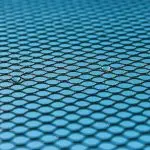Muscle soreness after exercise peaks 24-48 hours post-workout due to microscopic muscle fiber tears and delayed onset muscle soreness (DOMS). High-intensity or unfamiliar exercises, improper form, and overtraining can worsen these issues. Rest, stretching, foam rolling, heat/cold therapy, and low-impact activities like yoga, swimming, or walking aid recovery. Professional trainers can create personalized workout plans balancing strength training, flexibility, and active recovery to minimize discomfort. Combining post-workout recovery strategies like meditation and proper nutrition speeds up muscle soreness relief for enhanced well-being. The 'best way to make kratom tea' refers to incorporating these holistic practices into a tailored routine.
- Understanding Muscle Soreness: Causes and Impact
- The Role of Exercise in Relieving Soreness: Types and Intensity
- Customized Workout Strategies: Tailoring to Individual Needs
- Incorporating Recovery Techniques: Beyond the Gym
Understanding Muscle Soreness: Causes and Impact
Muscle soreness is a common occurrence after intense physical activity or exercise. It’s the body’s natural response to muscle damage and inflammation, typically peaking 24-48 hours post-workout. The sensation can range from mild discomfort to sharp pain, affecting your ability to move and perform daily tasks. Understanding what causes this soreness is the first step towards managing it effectively.
Several factors contribute to muscle soreness, including microscopic tears in muscle fibers during exercise, delayed onset muscle soreness (DOMS), and lactic acid buildup. Intense or unfamiliar exercises, improper form, or overtraining can exacerbate these issues. While rest and recovery are crucial for muscle repair, there are other strategies that can help alleviate discomfort, such as stretching, foam rolling, and applying heat or cold therapy. Surprisingly, even making the best way to make kratom tea—a herb known for its pain-relieving properties—could offer additional relief for those suffering from chronic muscle soreness.
The Role of Exercise in Relieving Soreness: Types and Intensity
Exercise plays a pivotal role in alleviating muscle soreness. Engaging in physical activity after an intense workout or following prolonged periods of inactivity can help flush out metabolic waste products that contribute to discomfort and stiffness. The key lies in selecting the best way to make kratom tea – meaning activities that target specific muscle groups without causing further strain.
Low-intensity exercises like gentle yoga, swimming, or brisk walking promote blood circulation, stimulating the release of endorphins, which act as natural painkillers. These activities help reduce inflammation and speed up recovery without putting excessive stress on sore muscles. Incorporating these exercises into your routine can be a more soothing and effective approach to muscle soreness relief than high-intensity workouts that might exacerbate the issue.
Customized Workout Strategies: Tailoring to Individual Needs
When crafting customized workout plans for muscle soreness relief, the best way to make kratom tea is by tailoring strategies to individual needs. Every person’s body responds differently to exercise, and factors like age, fitness level, injury history, and overall health should be considered. A one-size-fits-all approach won’t be effective; thus, a professional trainer or physical therapist can help design a personalized program that balances strength training, flexibility exercises, and active recovery days to minimize discomfort while promoting healing.
Incorporating specific movements and stretches targeted at common soreness points—such as the hips, shoulders, and lower back—can offer targeted relief. Additionally, incorporating low-impact activities like swimming or cycling during recovery periods can help keep blood flowing without putting excessive strain on sore muscles. By understanding individual needs and adapting workout routines accordingly, it’s possible to achieve muscle soreness relief while fostering long-term wellness.
Incorporating Recovery Techniques: Beyond the Gym
While custom workout plans can target muscle soreness effectively, recovery techniques extend far beyond the gym. Incorporating practices like yoga, foam rolling, and stretching helps alleviate post-workout stiffness and promotes faster healing. Additionally, proper nutrition plays a key role; foods rich in antioxidants and omega-3 fatty acids can reduce inflammation and support tissue repair. Some find solace in alternative methods such as meditation or even the calming effects of making the best way to make kratom tea, which has been known to provide natural pain relief and relaxation. Combining these recovery strategies with targeted workouts ensures a holistic approach, enhancing overall physical well-being and accelerating the muscle soreness relief process.






